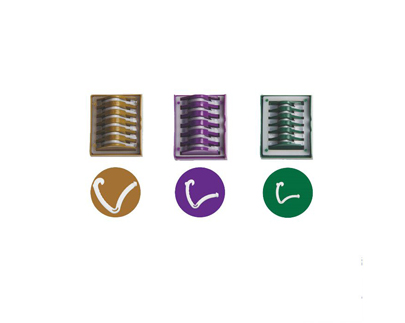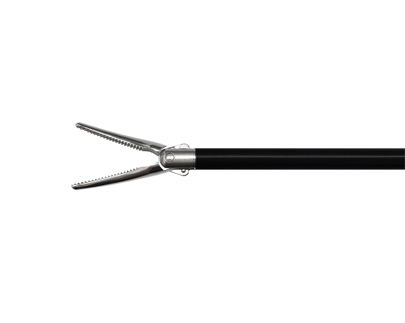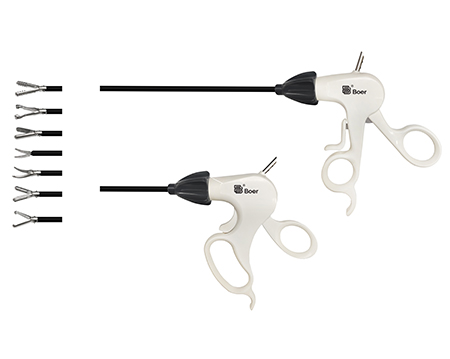Where Did The Titanium Clips Used After Polypectomy Go?
Titanium clip is a tool used for ligation during surgery. The design of titanium clip is relatively reasonable. Generally, it will not move at will after ligation with titanium clip. Titanium is a kind of biophilic metal, so it will not affect the human body if it stays in the body. There is too much harm. Titanium clips are relatively safe and reliable for the human body, and must be used in some operations, but some people feel that titanium clips are uncomfortable in the body, so do they need to be removed after surgery? ?So today, the editor of Burr's thoracoscopy equipment will popularize the relevant knowledge to you today:
With the continuous advancement of endoscopic minimally invasive technology, cutting-edge endoscopic treatments such as ESD, POEM, and STER have been rapidly developed and matured in a short period of time. The role of titanium clips in these treatments is very important, but almost all of them are on tissue closure and hemostasis, so the clips are generally called hemostatic clips or titanium clips.
When are titanium clips used?
1. Polyp resection: It is mainly used on the long pedicle (Ip, Isp type) in polyp resection. After the pedicle titanium clip is clipped, the nourishing blood vessels of the nutrient polyp can be blocked, which can prevent the long pedicle or Apedi polyp after resection. Risk of bleeding.
2. Sealing of ESD wounds: For larger ESD wounds, wound sealing is generally not performed, but for small ESD wounds with delayed risk, titanium clips need to be used to seal the wounds. This is mainly for the purpose of Prevention of delayed bleeding and delayed perforation complications in ESD wounds. For ESD wounds with an excessively large area, the wounds that still need to be closed should be closed with a titanium clip and nylon rope.
3. Ulcer with bleeding: For ulcers with bleeding in upper gastrointestinal bleeding, such as ulcer bleeding in the corner of the stomach, gastric antrum, etc., if the area is not large, the wound can be closed directly with titanium clips, while the ulcer with a larger area bleeds (Bare blood vessels) You can choose to clip on both sides of the bleeding foci to achieve hemostasis.
4. Dieulafoy's disease bleeding: Since the bleeding rate of Dieulafoy's disease is relatively fast but the lesions are relatively hidden or small, it is generally preferred to directly clamp the bleeding with titanium clips, which is also a very effective method for the treatment of Du's disease. Unless endoscopic hemostasis fails and requires surgical treatment, most patients with Duchenne disease can still successfully hemostasis endoscopically.
5. POEM, STER, EFR and NOTES: These technologies are the emerging hot frontier endoscopic treatment technologies in recent years. For these operating techniques, titanium clips are mainly used for wound closure, while for POEM, STER, and EFR operations, the closing process is simple clipping. After the closure of most regular wound titanium clips, the effect of simple interrupted suture in surgery can be achieved. NOTES is an active perforation, and its closure requires suturing of both the mucosal layer and the muscular layer, so the suturing of NOTES is relatively more difficult. To achieve double-layer closure to form a "high and low" arrangement of titanium clips, more care and patience are required. At present, this technology does not seem to have much large-scale reports.
6. Auxiliary positioning: For small lesions such as small-scale advanced gastric cancer that cannot be accurately positioned during surgery, titanium clips can be used to mark 1-2 titanium clips in the local area of the lesion under direct endoscopic vision, which is convenient for the surgeon to locate. During the operation, the lesion site can be easily found, so that the surgical operation can be successfully completed.
7. Treatment of perforated titanium clips: For units with a large workload, perforation of the digestive tract is not uncommon, and the treatment method is not the previous surgical operation. Endoscopic treatment is mainly based on the simple sealing of titanium clips, which can still achieve a good sealing effect, while larger wounds or perforated surfaces require the method of titanium clips and nylon ropes.
Do titanium clips need to be removed after surgery?
The titanium clip is relatively small, and it will not affect the body if it stays in the body. Generally speaking, after the wound is recovered, the titanium clip will fall off on its own and fly out with the stool, which takes about 10-15 days (depending on the individual). situation), there are also currently absorbable clips that can be slowly absorbed through the tissue.
Can an MRI be done after titanium clips?
Medical titanium clips are all pure titanium or titanium alloys. Generally, a small amount of zinc, iron and other substances will be added to the alloys, due to the possibility of postoperative MRI examinations of patients. Therefore, there is no interference to the NMR instrument whether it is pure titanium or titanium alloy. So its magnetic properties can be ignored.
At present, the diagnosis and treatment level of colonoscopy in the treatment of intestinal polyps and early intestinal cancer in China has reached the international advanced level. International new technologies such as titanium clip hemostasis, titanium clip positioning and nylon snare ligation, mucosal resection and argon knife coagulation have been proficient. Applied to the clinical treatment of intestinal polyps, these new technologies have enabled more than 95% of patients with intestinal polyps to undergo endoscopic resection.
However, it is still necessary to remind patients with intestinal polyps after endoscopic resection to pay attention to taking more liquid and semi-liquid diet within 10 days after operation, avoiding eating cold, spicy and hard food, and avoiding strenuous activities to prevent polyp resection stump In case of perforation and bleeding, if abdominal pain, blood in the stool, etc. occur, you should inform your doctor in time.
In addition, colon polyps have the characteristics of easy recurrence, so polyp removal does not mean that the alarm of cancer has been lifted, and patients still need to undergo colonoscopy follow-up screening. It is recommended that patients should undergo a colonoscopy review 3 months to half a year after the operation as required by the doctor.



